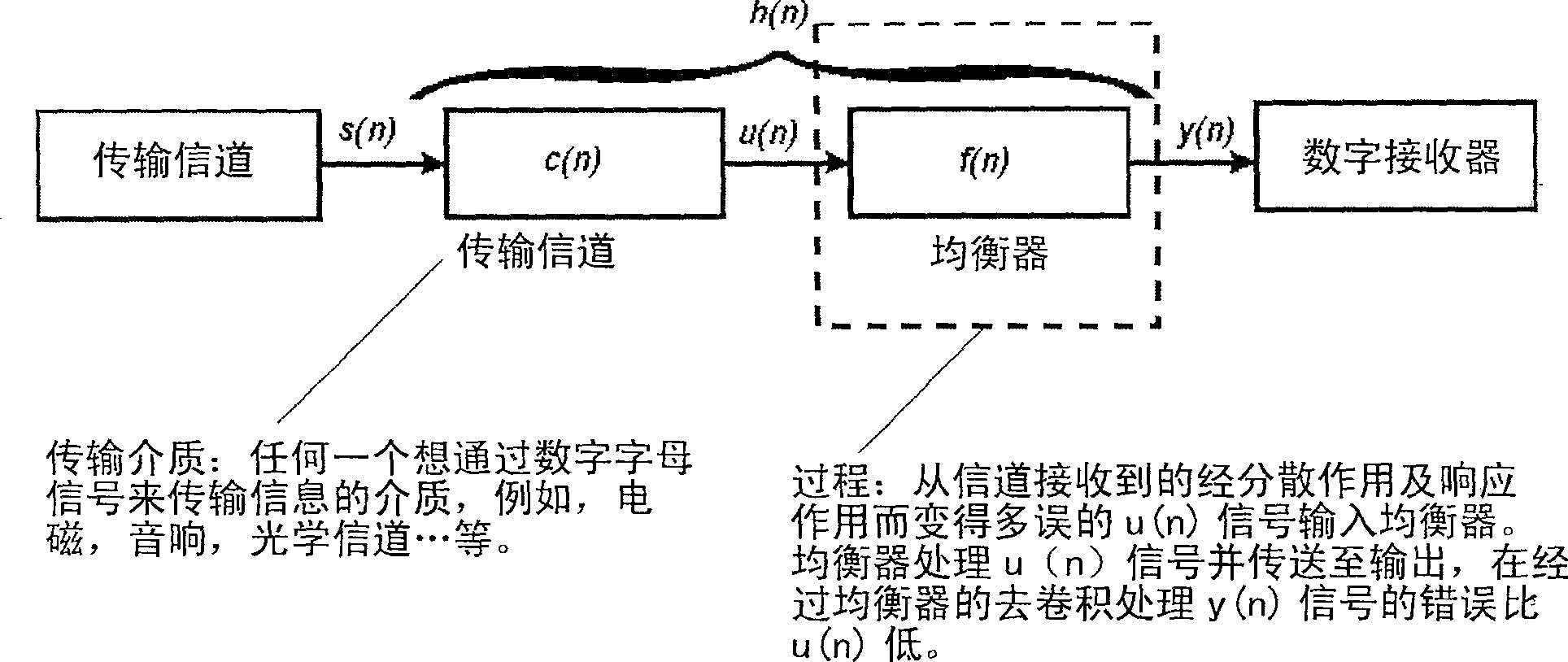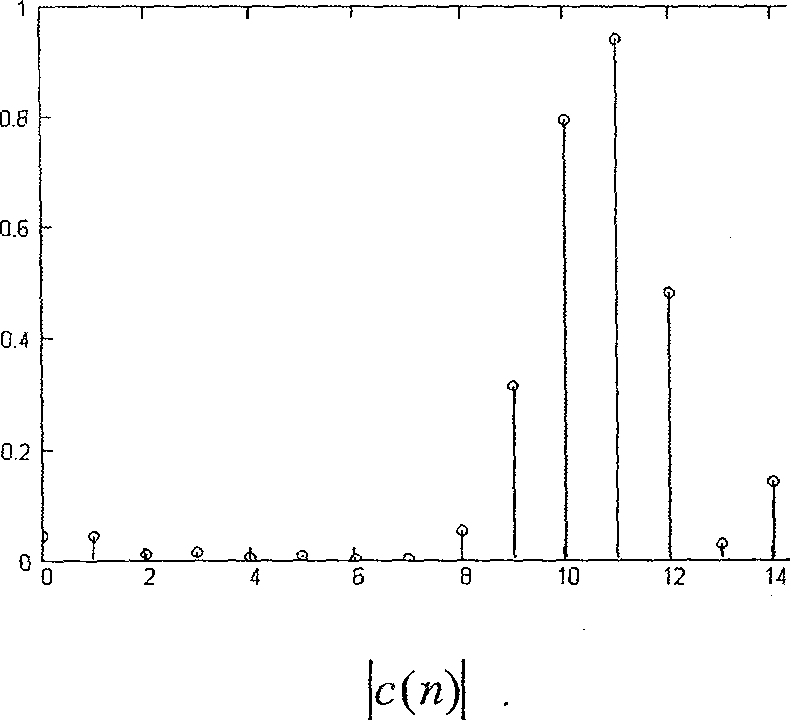Concurrent process method and system for blind deconvolution of digital signals
A digital signal, synchronous processing technology, applied in digital transmission systems, transmission systems, baseband systems, etc., can solve problems such as the highest rate limited equalizer, increase transmission speed, etc.
- Summary
- Abstract
- Description
- Claims
- Application Information
AI Technical Summary
Problems solved by technology
Method used
Image
Examples
Embodiment Construction
[0061] Solving the overlapping problem of propagation rays and dynamic changes in the transmission channels of digital systems is one of the tough challenges in the high-tech field in the coming years. In mobile communications, it is undesirable that parameters such as delay spread, angle spread and Doppler spread determine the level and dynamics of system-symbol overlap. Such symbol overlap is a result of channel information transmission.
[0062] In particular, overlapping of symbols occurs due to the dispersed nature of the transmission channel of any practical digital system, that is, the impulse response c(n) within the channel will have many non-zero values over many sampling intervals (see reference Literature [1]). The response of a non-dispersive channel to a δ(n) pulse is c(n), which is characterized in that when n d ≥0, there is a pulse δ(n-n d ).
[0063] The dispersion effect of the channel is perhaps easier to understand in terms of the impulse response in ...
PUM
 Login to View More
Login to View More Abstract
Description
Claims
Application Information
 Login to View More
Login to View More - R&D
- Intellectual Property
- Life Sciences
- Materials
- Tech Scout
- Unparalleled Data Quality
- Higher Quality Content
- 60% Fewer Hallucinations
Browse by: Latest US Patents, China's latest patents, Technical Efficacy Thesaurus, Application Domain, Technology Topic, Popular Technical Reports.
© 2025 PatSnap. All rights reserved.Legal|Privacy policy|Modern Slavery Act Transparency Statement|Sitemap|About US| Contact US: help@patsnap.com



